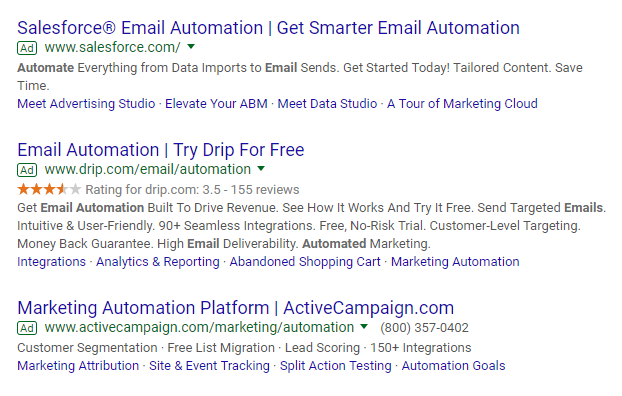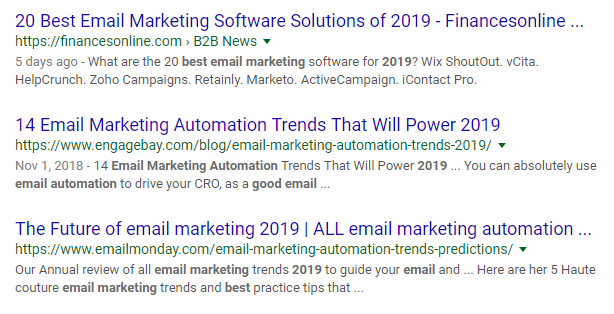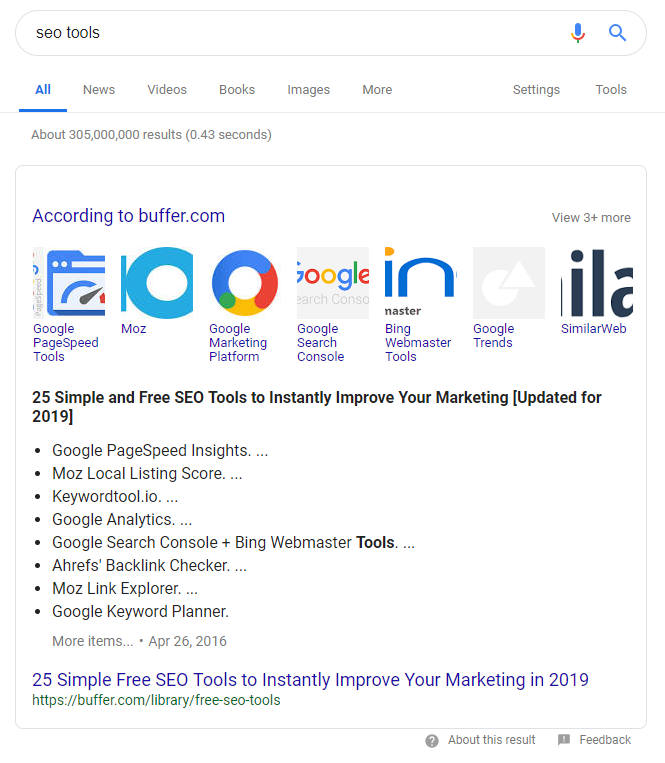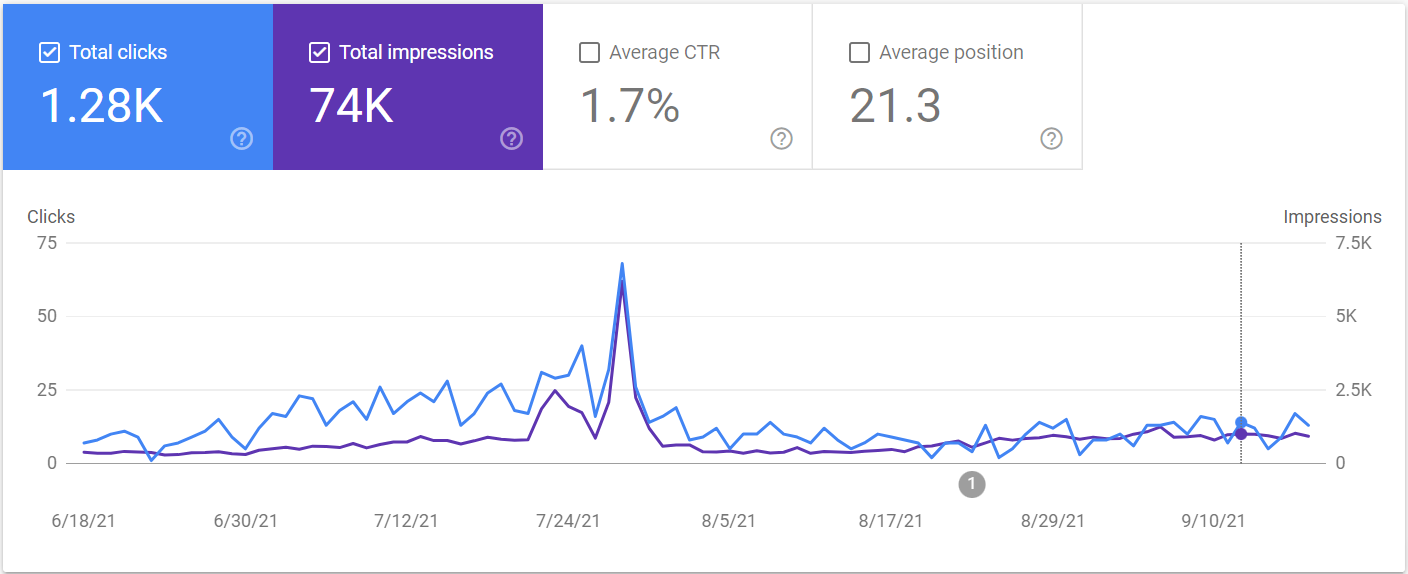What if I were to tell you that you can increase your website’s organic traffic without building new backlinks or adding more content.
Yes, it’s possible.
How?
By optimizing the CTR (Click Through Rate) on your existing organic search results.
You might be unaware of how big you are missing on your potential organic traffic by not optimizing your website and search results for higher CTRs.
Now you can not just publish some random content to throw it on the internet and pray for it to rank on its own. It’s 2019 already, you are competing against millions of other websites on search engines to achieve the top spots.
And if you managed to get on the first page of Google for your desired keywords but still are not getting your traffic pie. You should think about it, as to where are you missing upon.
Have you ever think, what makes a web visitor clicks on a particular result over others?
If not, then you should.
Lets dive into it with an example scenario.
Scenario: Suppose you are ranking #5 for a particular keyword and you have optimized your title, URL, and description very well to attract the maximum eyeballs.
You started getting better CTR and dwell time than those above ranking #4 and #3 competitors.
What better CTR and dwell time will translates into?
It sends out a signal to Google that result #5 (i.e. yours) is a better resource for the given keyword than the above ranking results at #4 and #3. And you will see a gradual increase in your rankings until you replace that #3 position.
So without wasting any more words on describing why optimizing for organic CTR is important, let me directly hop on the real meat i.e. my top 9 tactics that I keep handy while optimizing my SEO search snippets before publishing any post.
1) Use Power Words
Your headline is the first thing that your potential visitor sees on the search page. Those 8 - 9 words leave the maximum impact and entice the visitors whether to click on your result or not.
The only goal of headlines is to build the curiosity of knowing what is the content behind that headline.
In the English language, adjectives do the part of building that curiosity.
You can dump any words in your title tag whatever your mind tells you. Or there is a better way, you can test out these proven power words (with example titles) from my list.
“Secret” - The Ultimate Secret to Increasing Your Online Conversion Rate
“Super” - 7 Super-Effective Link Building Strategies
“Quick” - 13 Quick Tips to Improve Your Web Design Skills
“Fast” - Fast Track Your SEO Campaign Efforts
“Real” - Real Challenges in Mobile App Development
“Warning” - 5 Warning Signs that Show You Are Doing SEO the Wrong Way
“Essential” - 10 Essential Tools for Startup Growth Hackers
“Proven” - 3 Simple PPC Formulas Proven to Lower Your Costs
“Free” - The 8 Best Free and Open Source CRM Software Solutions
“Creative” - Blog Marketing Tips: 45 Creative, Clever And Effective Blog Taglines

Have you noticed how I utilized the power word 'Exact' in my title with "The Exact Cost Of Outsourcing Mobile App Development In 2018".
2) Use Odd Numbers in Your Meta Title
You may have noticed in some of the example titles I have written above that there are some odd numbers included in the titles. For example, “13 Quick Tips to Improve Your Web Design Skills”, you see the number I mentioned in the title. It’s 13, an odd number.
So, why I used an odd number i.e. 13 in this case.
Because:
It’s a data-backed psychological truth that our subconscious mind tends to get more attentive towards odd and specific numbers rather than general figures.

Let’s do a quick test on yourself right now. Choose which of the below headline gets you intrigued more. -
- This is How I Made $10,000 Last Month
- This is How I Made $10,131 Last Month
If you are among the majority of internet users, it’s the second headline that’s getting more attention comparatively.
I think you might get what I’m trying to convey here.
In my opinion, the meta titles should be written to get the user's interest and not to show your perfectly fine grammatically correct posh English sentence. Use anything from hashtags, brackets, years or random (but genuine) numbers to craft a title.
So, just think out of the box and craft the title without following some strict English sentence structuring rules. Use everything that can make the title short while being most descriptive.
3) Analyse Google Ads Listings
There is a huge number of companies in every industry of businesses who are heavily investing in paid advertising to drive targeted traffic to their websites from search engines. And since they are already spending good money on ads and constantly A/B testing and tweaking their ad copy to achieve the maximum impressions and conversions. Why not leverage their advertising budget to our marketing advantage.
How?
Let me explain to you.
Type your keyword in google and see if there are advertisements listed (usually the top 1-4 results).
Analyze how other companies are tweaking their ad headlines. Since they are spending direct money on ads, they regularly do a lot of A/B tests on their ad text to test out the best-performing copy.

So, when they already tested out what is performing well for the target audience. Why not get some tried and tested buzz words from there to include in your organic headline.
4) A/B Test the Time Stamp in Your Search Copy
It's a debating topic of whether it is wise to show the date or not on your organic listing.
Trust me, the date stamp does affects click-through rates definitely.
How? Because it gives the users a sensation if the content that he is going to click is fresh or ages old.
If your content is time-sensitive, then you should definitely consider adding a date stamp on your listing. But if it is an evergreen type of content then you shouldn’t bind it with the date stamp.

Decide yourself, suppose you searched “Best smartphone to buy under $400”, would you click on a result that is showing date from 2014.
5) Simpler But Descriptive URL
Just like the headlines, URLs also give the gist of content about what to expect. The more advanced search engine users do look at the URLs before clicking on a particular search result.

Most of the time e-commerce sites do a very bad job at URL optimization. Most of them use dynamic URL building with random words and numbers instead of the descriptive product names in the URL.
Users should get an idea about the content behind by hovering over the title. And not to mention, short URLs got a marginal edge over long URLs in terms of SEO.
6) Stop Using Auto Appended Title Enders
You are only allowed to leverage the 620px for Google search results on desktop. That 620px is your real estate that you need to make the most of.

Almost 90% of the websites use auto-appending branded text (usually company name) at the end of their meta title. The only reason for doing that is to build the brand identity among web visitors.
And I’m not against it at all.
But what if you come up with a killer but longer headline. The headline will be truncated from the end to include the auto-appending branded text into your search result. So it is always advisable to leverage your search engine results’ real estate wisely for the maximum utilization and click-through rate.
7) Optimize to Get Into Featured Search Snippet / Google Answer Box
Another more general name for featured snippets is the answer boxes. As per a research conducted by Ahrefs, 99.58% of featured snippets are from the results that are already ranking in top 10 results on Google.

To be able to stand a chance of getting featured as a search snippet, your post should clearly and concisely answer the search query.
More than 30% of the search results now include featured snippets and this number will keep on increasing as more and more voice searches have been made on Google.
Want to get in-depth? Aleh Barysevich covered a good article on how to optimize the website to win the answer box on Google.
8) Optimize Your Landing Page for Maximum Dwell Time
Dwell time is the time that an organic visitor spends on your page after clicking through your search result. And without a doubt, it’s a very strong ranking factor.
You might be thinking that boosting dwell time is related to on-page optimization. But let me tell you if your pages have high dwell time, which means visitors are spending time on your pages, Google’s algorithm thinks that your pages have successfully met the searchers' requirement. In results, you will notice a gradual boost in rankings for that particular keyword or search phrase.
And higher ranking is directly proportional to higher CTR.
9) Create Your Post Engaging With Custom Images
“An image is worth a thousand words”. Yes, you heard this old saying again.
Images not only keep the reader engaging but also images got picked into featured snippets that could drive some serious traffic because of rank zero (as explained in point #7).
Try to use custom images, screenshots, custom charts and graphs to support the content instead of stock images. Custom images will bring instant authority to your write-ups as well.
Did you find some great strategies from my post to boost your CTR? What other strategies you are implementing to boost your click-through rate on Google?
Let us know in the comments.
 9 Sure-Fire Ways To Improve Your Organic Click-Through Rate (SEO CTR)"
loading="lazy"
width="600"
>
9 Sure-Fire Ways To Improve Your Organic Click-Through Rate (SEO CTR)"
loading="lazy"
width="600"
>
Comments